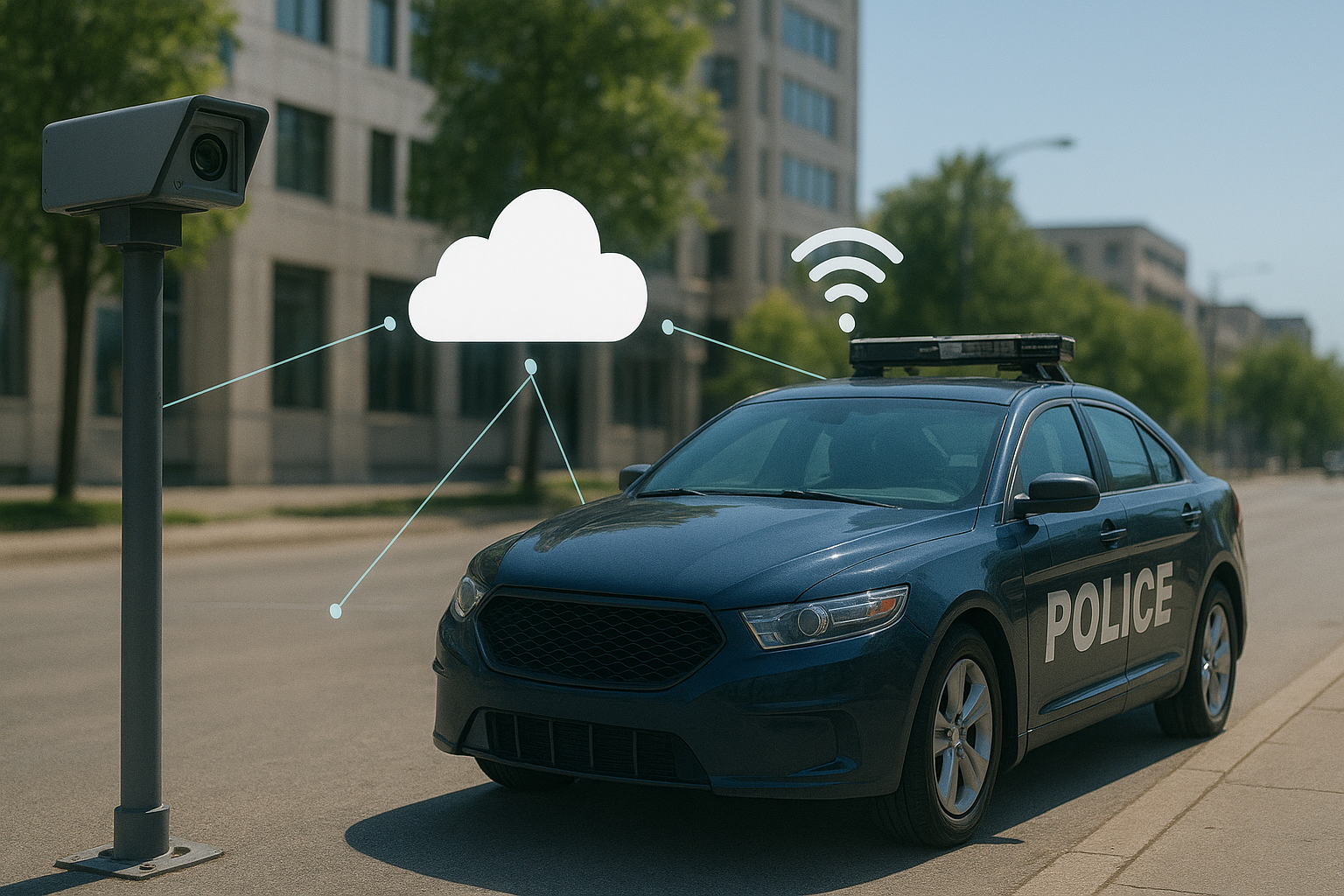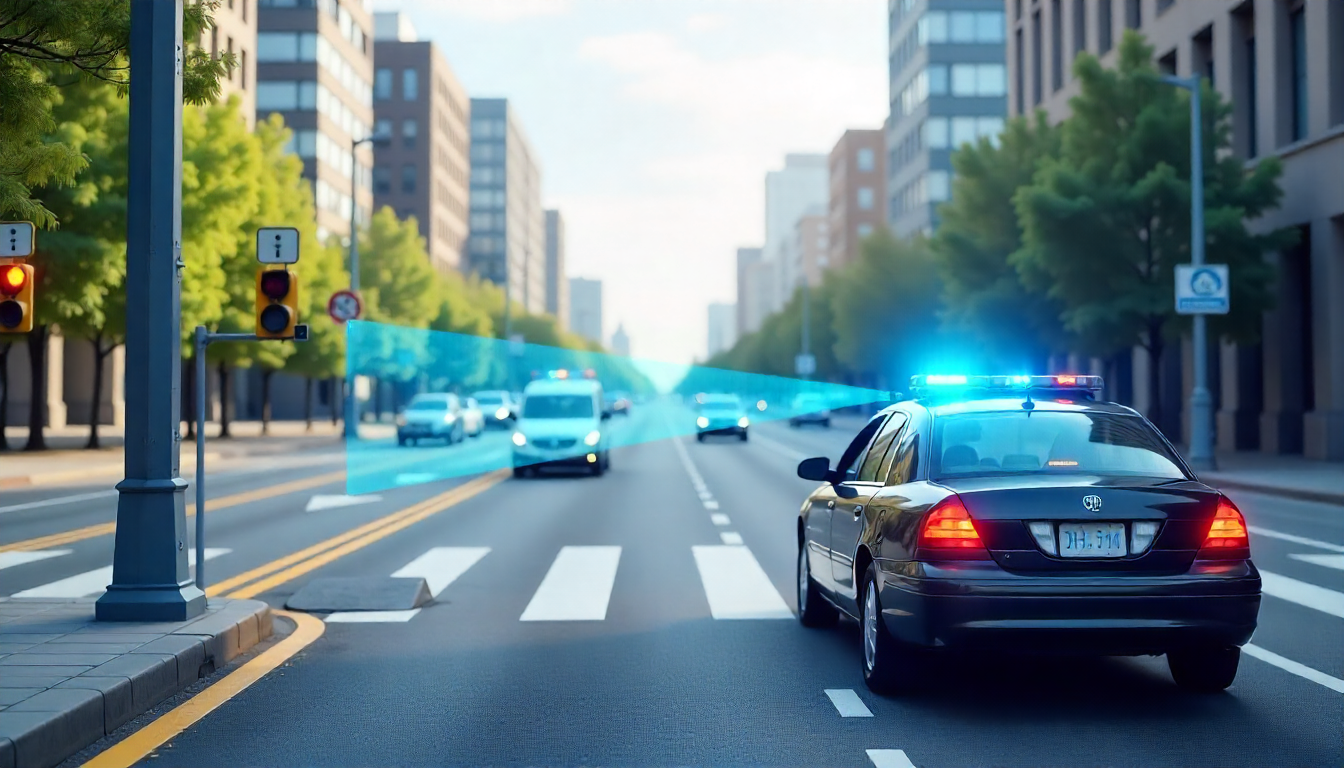In-Vehicle LPR vs. Fixed ALPR (Which Solution is Right for You?)
Every city, patrol unit, and parking operator now faces the same question: should license plate recognition live on your vehicles, or on your infrastructure?
In-vehicle ALPR camera and fixed roadside ALPR system capturing license plates in an urban environment, illustrating mobile versus stationary recognition technology
Both in-vehicle (mobile) and fixed ALPR systems identify plates in milliseconds, but how they do it, what they cost, and where they shine are completely different stories.
The Short Version
Mobile ALPR: Cameras mounted on patrol cars or enforcement vehicles capture plates while moving. Ideal for coverage and responsiveness.
Fixed ALPR: Cameras mounted on poles, gates, or intersections record every passing vehicle 24/7. Ideal for consistency and analytics.
Choosing between them depends on:
Coverage needs
Infrastructure access
Bandwidth and storage strategy
Compliance and privacy considerations
Real-time vs historical data goals
How Mobile (In-Vehicle) LPR Works
A mobile or in-vehicle LPR setup mounts high-resolution infrared cameras to a patrol car, parking vehicle, or enforcement van. Each camera scans plates as the vehicle moves, sometimes capturing hundreds per minute.
Police vehicle equipped with infrared cameras scanning license plates using mobile LPR technology in real time
The on-board system, often edge-powered by Jetson or x86 hardware, processes images locally. Plates are detected, recognized, and tagged with GPS coordinates before syncing with a local or cloud database.
In short: mobile LPR turns your patrol car into a roaming data sensor.
Real-world example
According to Motorola’s LPR Buyer’s Guide (2024), a two-camera mobile unit can scan up to 3,000 plates per hour, offering flexible deployment for parking enforcement and law enforcement patrols alike.
Where it shines
Dynamic coverage: Ideal for patrols or cities where vehicles roam large zones.
Lower upfront infrastructure: No need for poles, cabling, or trenching.
Fast deployment: Can be installed in hours rather than weeks.
On-the-spot response: Real-time alerts for stolen, expired, or hot-listed plates.
How Fixed ALPR Works
Fixed or stationary ALPR systems are mounted on poles, gates, or intersections. They continuously monitor defined lanes or areas, like entrances, tolls, or perimeters.
Unlike mobile units, these systems rely on static placement to build long-term, high-accuracy datasets.
Common deployment sites
Toll booths
City entry/exit points
Parking facility gates
Border or checkpoint perimeters
Operational flow
A fixed camera captures every passing vehicle, typically at 25–60 fps, then processes the image either locally on an edge node or via a connected ALPR server.
Where it shines
24/7 surveillance: Ideal for persistent monitoring.
High data quality: Stable angle and lighting lead to higher accuracy rates.
Integration-friendly: Connects to gate controls, billing systems, or enforcement databases.
Analytics-ready: Enables historical queries and traffic pattern analysis.
Cost and Complexity
According to DHS’s 2025 Market Survey Report on ALPR, mounting type is the single largest cost differentiator.
| System Type | Setup Cost | Ongoing Cost | Typical Use Case |
|---|---|---|---|
| Fixed ALPR | $7,000–$12,000 per lane
(camera + pole + network) |
Medium | 24/7 surveillance, tolling, gates |
| Mobile ALPR | $4,000–$8,000 per vehicle | Low | Patrol, parking enforcement, roaming detection |
What this means:
Mobile is cheaper to deploy, especially when vehicles already exist.
Fixed costs more upfront, but yields predictable, continuous coverage.
Hybrid setups often provide the best ROI: patrol for coverage, fixed for consistency.
Accuracy and Reliability
Accuracy depends on three variables: angle, speed, and environment.
| Factor | Mobile ALPR | Fixed ALPR |
|---|---|---|
| Angle stability | Varies with vehicle motion | Consistent |
| Lighting | May change (sun glare, night patrols) | Controlled (IR illumination) |
| Speed of capture | Up to 120 mph closing speed | Usually 0–70 mph |
| Misread rate | ~5–8% (moving vehicle) | ~3–5% (stationary mount) |
(Source: AAMVA Best Practices Guide, 2023)
Watch-outs:
Glare and vibration can reduce accuracy in mobile setups.
Fixed systems may miss vehicles outside the camera’s narrow field.
Data and Network Considerations
Bandwidth: Fixed systems stream constantly; mobile units sync data periodically.
Storage: Mobile systems often use local SSDs; fixed systems depend on NVRs or cloud storage.
Power: Fixed units require constant power and network; mobile draws from vehicle systems.
Hybrid ALPR setup showing fixed roadside camera and mobile patrol vehicle syncing data to cloud network for efficient bandwidth and storage management
The DHS report highlights that hybrid ALPR deployments often optimize costs: using fixed cameras at choke points and mobile ones for flexible scanning.
Privacy and Policy
Public concern often centers on data retention and access, not the technology itself.
A Brennan Center study found that more than 70% of jurisdictions store plate data for over 6 months, often beyond legal need.
Compliance checklist
Before deploying either system, agencies should:
Define retention periods (e.g., 30/60/90 days).
Restrict user access and log all lookups.
Notify the public or include signage when required.
Keep processing on-prem or at the edge where possible.
This is where platforms like Sighthound ALPR+ offer an advantage: real-time detection with local data processing, meaning footage never leaves your environment unless you want it to.
Performance in the Field
Law enforcement use
A 2025 case study from Police Chief Magazine notes that combining fixed and in-car ALPRs can boost vehicle recovery rates by 40%, thanks to better coverage overlap.
Parking and private use
Parking operators often start with fixed gate-mounted cameras for entry logs, then expand to mobile enforcement vehicles for citations or open-lot management.
Sighthound ALPR+ customers in municipal parking report that hybrid setups reduce manual checks by up to 60%.
Pros and Cons at a Glance
| Criteria | Mobile (In-Vehicle) ALPR | Fixed ALPR |
|---|---|---|
| Coverage | Citywide, flexible | Fixed corridors |
| Setup Time | Hours | Weeks |
| Accuracy | Moderate (motion variance) | High (stable) |
| Data Volume | Event-based | Continuous |
| Maintenance | Moderate (vehicle dependent) | High (network, environment) |
| Ideal For | Patrol, parking enforcement, temporary events | Entrances, perimeters, analytics |
| Privacy Risk | Lower (less persistent) | Higher (continuous tracking) |
The Hybrid Approach
The future of ALPR isn’t mobile or fixed: it’s both.
Cities like Miami and Chicago now blend:
Fixed cameras at key junctions
Mobile patrols feeding alerts to the same backend
This approach gives law enforcement and private operators broad situational awareness while controlling infrastructure costs.
Hybrid ALPR system illustration showing fixed roadside cameras & mobile patrol vehicles integrated into a unified dashboard for real-time license plate recognition & citywide monitoring
Hybrid ALPRs integrate through unified software like Sighthound ALPR+, where both stationary and vehicle feeds appear in the same dashboard with synchronized metadata.
When Not to Deploy
Not every environment needs continuous license plate monitoring.
Before investing:
Assess use case density. Rural or low-traffic zones may not justify fixed costs.
Check legal obligations. Some states now require explicit disclosure or warrant use for plate data.
Evaluate bandwidth. Cloud-heavy systems may overrun municipal networks without proper throttling.
Sometimes, a simpler edge-based recorder or event-triggered capture is sufficient, especially when used with AI redaction tools for privacy before sharing.
What to Do Next
If you’re planning to deploy or upgrade your ALPR program:
Define your goal: Is it live enforcement, analytics, or access control?
Estimate coverage radius: Fixed cameras = per-lane. Mobile = per-zone.
Calculate total cost of ownership: Include network, mounting, and maintenance.
Start hybrid: Use mobile first, add fixed at high-value locations.
Evaluate vendor transparency: Favor edge-capable, on-prem options that respect privacy.
Want to see Sighthound ALPR+ in action? Watch this short demo.
For business opportunities, explore our Partner Program today.
FAQ Section:
-
In-vehicle (mobile) ALPR systems are mounted on patrol or enforcement vehicles that scan license plates while moving. They’re designed for coverage and flexibility, ideal for patrols, temporary events, or mobile enforcement routes.
Fixed ALPR systems, on the other hand, are permanently mounted on poles, gates, or intersections. They provide 24/7 monitoring with stable angles, higher accuracy, and detailed analytics for entrances or perimeters. Many agencies now combine both for maximum coverage.
-
Costs vary by deployment type. Fixed systems average $7,000–$12,000 per lane, including mounting and networking. Mobile systems range between $4,000–$8,000 per vehicle, depending on the camera type and onboard processor.
-
Look for proven accuracy, transparent privacy practices, and flexible deployment options (on-prem, edge, or hybrid). Ensure the platform supports easy integration with existing systems like VMS or access control.




